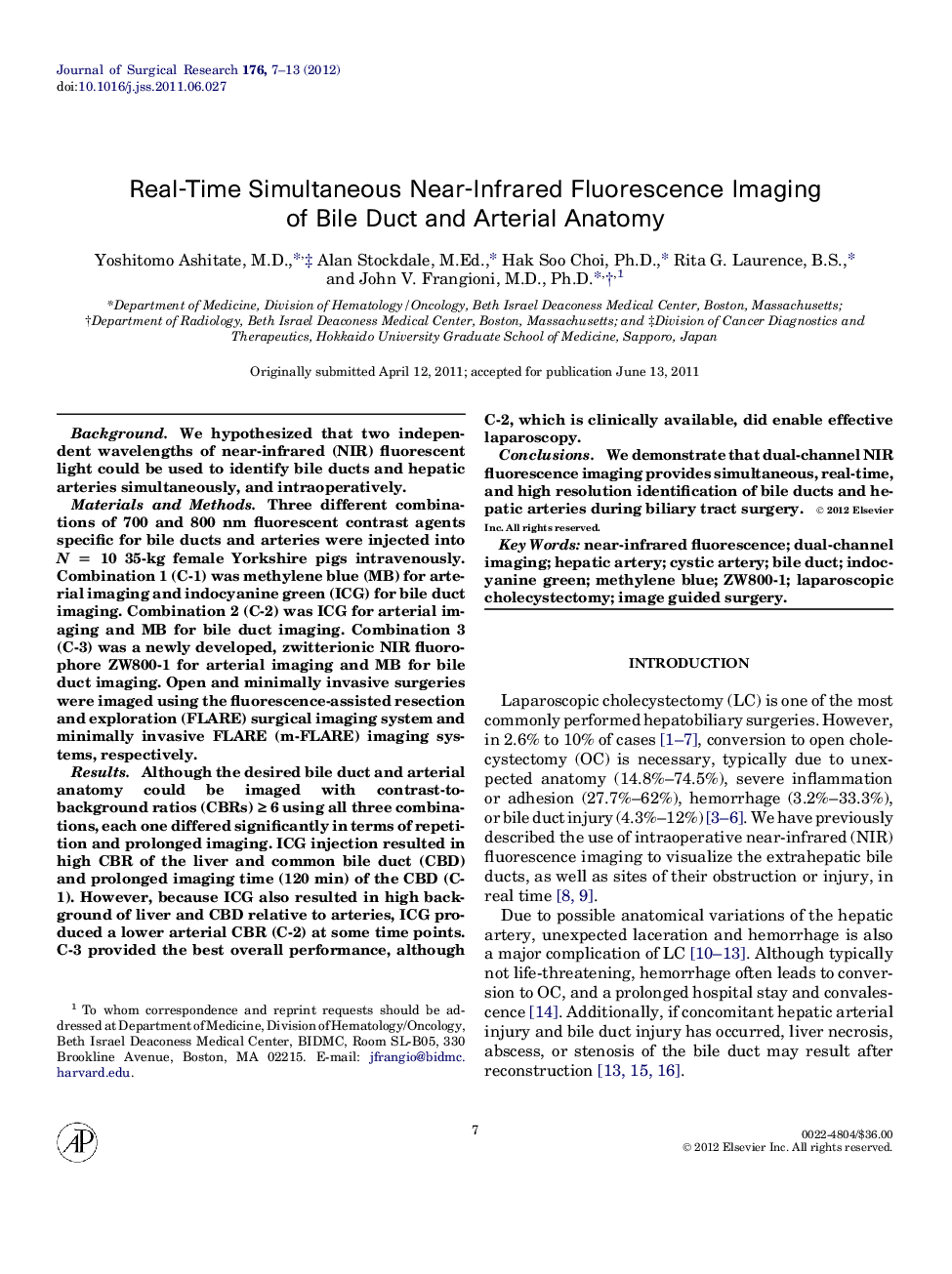| Article ID | Journal | Published Year | Pages | File Type |
|---|---|---|---|---|
| 4301249 | Journal of Surgical Research | 2012 | 7 Pages |
BackgroundWe hypothesized that two independent wavelengths of near-infrared (NIR) fluorescent light could be used to identify bile ducts and hepatic arteries simultaneously, and intraoperatively.Materials and MethodsThree different combinations of 700 and 800 nm fluorescent contrast agents specific for bile ducts and arteries were injected into N = 10 35-kg female Yorkshire pigs intravenously. Combination 1 (C-1) was methylene blue (MB) for arterial imaging and indocyanine green (ICG) for bile duct imaging. Combination 2 (C-2) was ICG for arterial imaging and MB for bile duct imaging. Combination 3 (C-3) was a newly developed, zwitterionic NIR fluorophore ZW800-1 for arterial imaging and MB for bile duct imaging. Open and minimally invasive surgeries were imaged using the fluorescence-assisted resection and exploration (FLARE) surgical imaging system and minimally invasive FLARE (m-FLARE) imaging systems, respectively.ResultsAlthough the desired bile duct and arterial anatomy could be imaged with contrast-to-background ratios (CBRs) ≥ 6 using all three combinations, each one differed significantly in terms of repetition and prolonged imaging. ICG injection resulted in high CBR of the liver and common bile duct (CBD) and prolonged imaging time (120 min) of the CBD (C-1). However, because ICG also resulted in high background of liver and CBD relative to arteries, ICG produced a lower arterial CBR (C-2) at some time points. C-3 provided the best overall performance, although C-2, which is clinically available, did enable effective laparoscopy.ConclusionsWe demonstrate that dual-channel NIR fluorescence imaging provides simultaneous, real-time, and high resolution identification of bile ducts and hepatic arteries during biliary tract surgery.
